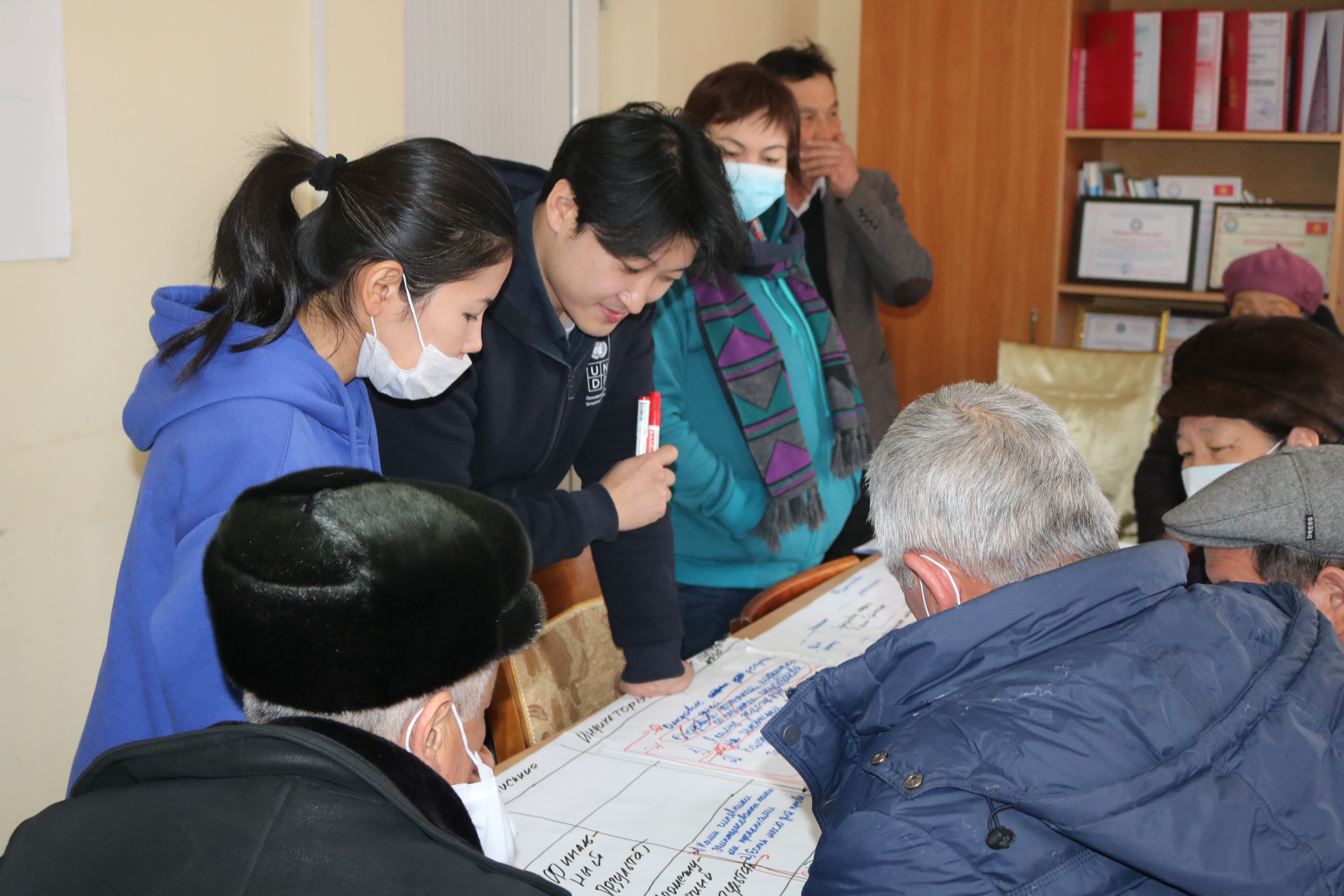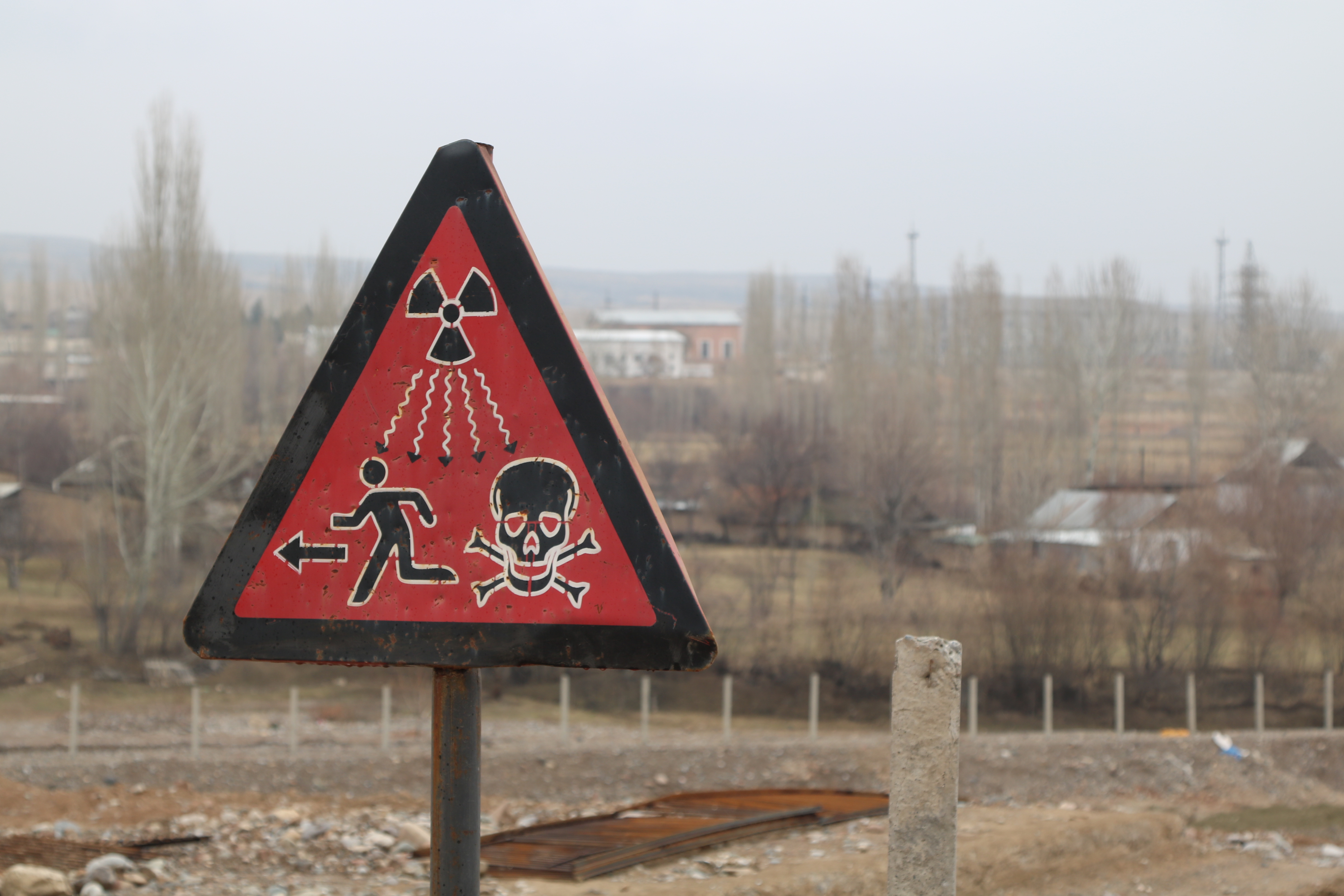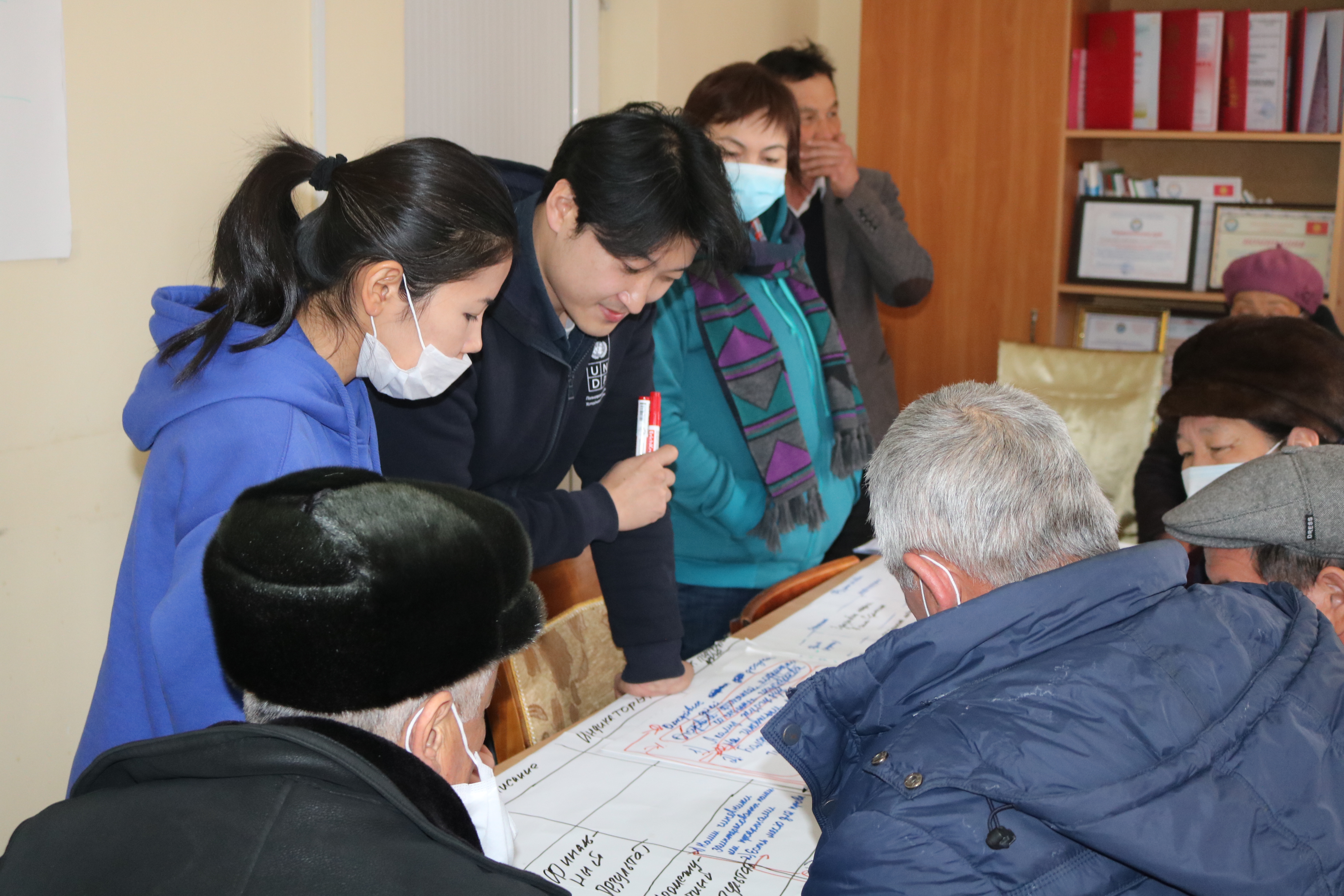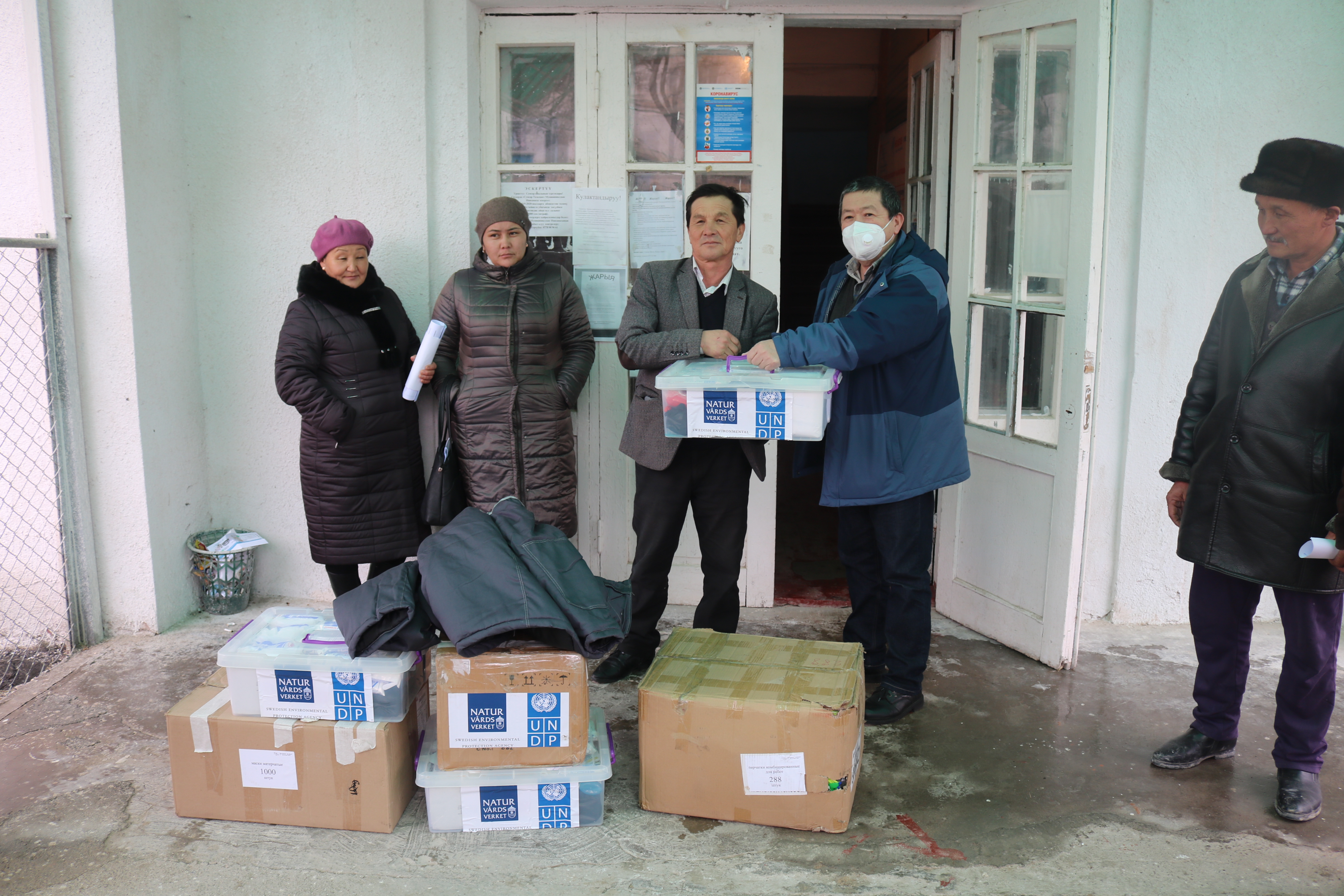Promoting Environmental Protection through Community Engagement
August 5, 2022

SUMSAR VILLAGE, JALAL-ABAD REGION, KYRGYZ REPUBLIC
To reach Sumsar village in the western part of Kyrgyzstan one must traverse several mountain passes with rivers, snow-covered summits, twisting roads, and breathtaking views of natural beauty. The village was established in 1952 as part of the development of a mining operation that produced 72,000 tons of lead and 16,000 tons of zinc from 1951 to 1978.
“The village was alive and full of activities”, says Patima Narbayeva, a Sumsar village resident. “We used to receive high wages and had access to social protection”, she recalls.
Today, the waste from the processing plants is stored in three tailing dumps surrounded by houses and farmland. Decades after the closure of the mines and plants, some 4.5 million tons of lead-zinc ore continue to threaten the health and well-being of around 7,000 village residents. Some houses are no more than 50 or 60 meters from tailing sites with heavy concentrations of toxic waste.
"Now, when strong winds blow, heavy metals are carried from the surface of the tailings. The village turns into a halo of dust pollution and fog. This has a bad effect on our health, evidenced by a high number of sick people in our village, but we didn’t know how to protect ourselves,” Ms Narbayeva concludes.
Community-based monitoring of Sumsar tailing dumps with local and provincial authorities and village residents
The joint Swedish Environmental Protection Agency – UNDP Environmental Governance Programme (EGP) conducted a comprehensive assessment of environmental risks in the village, concluding that the local population was not involved in decision-making regarding the tailings and was not aware of the extent of their toxicity.
The socio-economic assessment and community survey identified gaps in understanding risks and health and environmental effects, including the following:
- 78% of residents were not fully aware of the problems posed by the tailings and toxic waste.
- 17% of respondents said they had heard of the tailing dumps and waste, though their knowledge was limited.
- 5% of respondents confirmed that they knew about the impacts of the toxic tailings on human health and the environment, including radiation levels.

Radiation warning sign in Sumsar village, located in the Chatkal District of the Jalal-Abad Region
A HUMAN-CENTRED APPROACH
The programme used a human-centred approach to counter these challenges by working with local partners and communities to address health and environmental issues posed by toxic heavy metals and industrial waste. As part of these efforts, the programme facilitated inspections of the tailings by local and provincial representatives and government leaders, accompanied by UNDP Disaster Risk Reduction experts.
The programme has also helped residents familiarize themselves with reliable reports on the state of the toxic tailings, including assessments of their current impacts and risks to the local community’s health and the environment.
EGP-supported activities identified priority public works interventions, including testing the contents of tailings, sampling soil, drinking water from the Sumsar river, and infiltration water from tailings. In addition, the programme provided the village with KGS 822,500 (Kyrgyzstan Soms, equivalent to USD 10,000)
supplies and equipment, including first-aid kits, masks, and protective clothing.
"My participation in monitoring and community service prompted in me the civic duty to make the place where my family and I live safer.” - Azamat Alymov, a schoolteacher in Sumsar village.

Supported by the EGP, UNDP Kyrgyzstan provides training to community members and local stakeholders in the Sumsar village
"We desperately needed protective equipment, especially those near toxic tailing dumps or cultivating their land around them. Children and the farmers working in the fields are now using the equipment”, said Aitkul Rysbekov, former head of the village government.", said Aitkul Rysbekov, former head of the village government.

UNDP Kyrgyzstan delivers protective equipment to Sumsar village officials and community-based monitors
The EGP is committed to engaging residents in training and community-based monitoring as part of its mission of supporting improved human rights and environmental protection.
The programme will continue to empower local communities to take an active part in the governance of the tailing sites and to build trusting relations with local, provincial, and central government authorities.
Learn more:
ENVIRONMENTAL GOVERNANCE PROGRAMME (EGP)
The EGP is a partnership between the Swedish Environmental Protection Agency and the United Nations Development Programme (UNDP). The EGP supports resource-rich countries to integrate environment and human rights into the governance of the mining sector. Programme countries include Argentina, Colombia, Ecuador, Kenya, Kyrgyzstan, Liberia, Mongolia, Namibia, Peru, and Zambia.
The EGP is funded by the Swedish International Development Cooperation Agency (Sida).
EMAIL: CONTACT.EGP@UNDP.ORG
WEB: WWW.ENVIRONMENTALGOVERNANCEPROGRAMME.ORG

 Locations
Locations